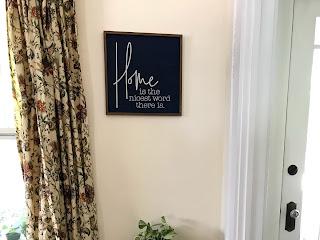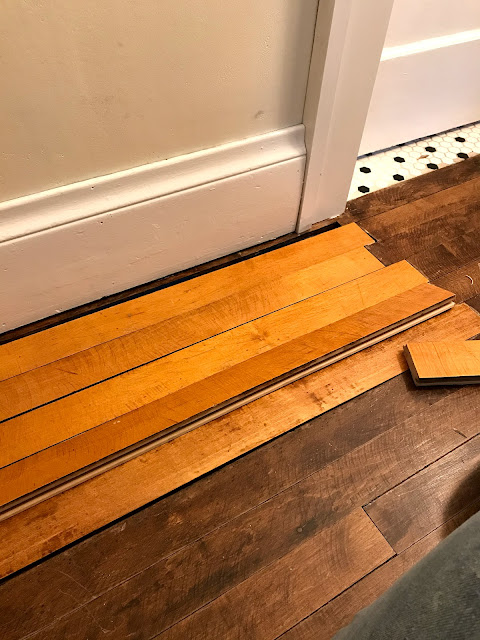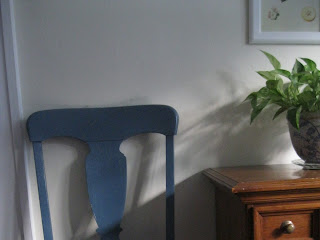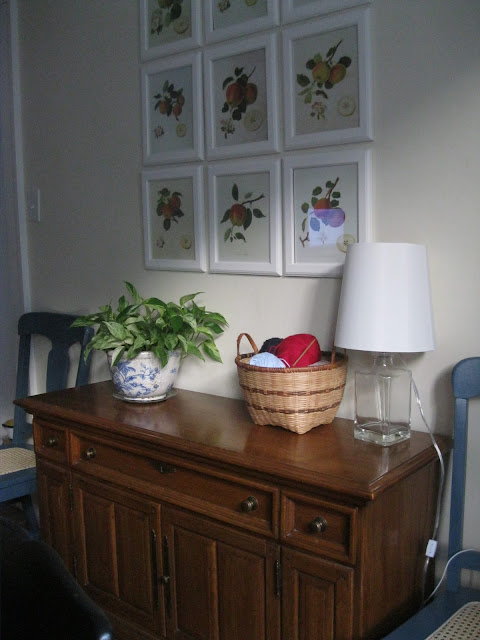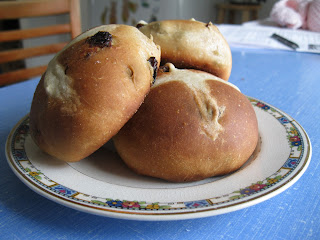Guess what we did this weekend?!?
Yes, we shellacked the floors again! The last time was back in.... 2014! I just checked and if you are interested HERE is the link to the post about it. Goodness! All things considering the floors have held up great for six years.
As you can see, there was worn patches and scratches. And I probably should have done this last year, but I had just finished up the Brick House floors and wasn't really ready to tackle more floors. That turned out to be okay as moving the radiators around put a few more scrapes and scratches in the floors. Not to mention the patching of the cold air returns.
There is something refreshing about moving all the furniture out and cleaning the floors and baseboards really well. (Actually, the dining room table, bookshelf and the sofa stayed. Everything else we managed to cram on the front porch and in the bedrooms!)
Part of this project was also redoing the little hallway floor. I never liked how it turned out, but since it was a small portion of the floor we just lived with it. Above is the "after" with finish on it. It was quite the process to get there!
This is what I started with. I hadn't realized how scratch up it was. And obviously I needed to blend the patch with the rest of the floor.
The first step was to remove the current finish which was shellac I had put on it 2013. I tried not to use a sander as the dust gets everywhere. Instead I tried scraping it by hand with a vintage Stanley 82 scraper. It worked fairly well, but was very slow on taking off the finish. So I eventually got out a small belt sander.
Because this is maple which I tried to stain, the belt sander wasn't evening it out very well and I ended up doing a final sanding by hand with 50 grit sand paper, then hand scraping it thoroughly to smooth it. This method worked very well and I felt like it was a reasonably good place to be. I wasn't ready to spend another week sanding to try and get down below all the stain.
The first coat was a light amber button shellac similar to what I used at the Brick House (a detailed post here). I used the same button type shellac from www.Shellac.net , just in a different shade. Yes, shellac comes in different shades! It just depends on how dark you want your orange. Lol! There isn't too much difference between the shades, but it is nice to have options.
And this is with the next coat of shellac which I put Brown Mahogany dye in. (Also from Shellac.net). I love how the dye worked! It is still a bit blotchy from the previous stain job and old sanding marks. I am not sure if it that much different from how it started, but at lest the cold air patch is blended a bit more! And the tone matches better.
At the same time as putting the first coat on the hallway, we put a coat on the dining room. You can see the line in the picture above of "coated" and "uncoated". The button shellac is so different from the pre-mixed shellac you buy in the store. I know it is hard to tell in this picture, but the buttons are a lot less shiny, it also dries faster and harder. And for some reason not as glossy smooth. Still trying to figure that one out....
I love the afternoon sun coming in the piano window! Just waiting for everything to dry!
We have been enjoying a clean and uncluttered look!
Now we are working on finding a new rug we like and wall art. This long wall has kinda been a stumper!

